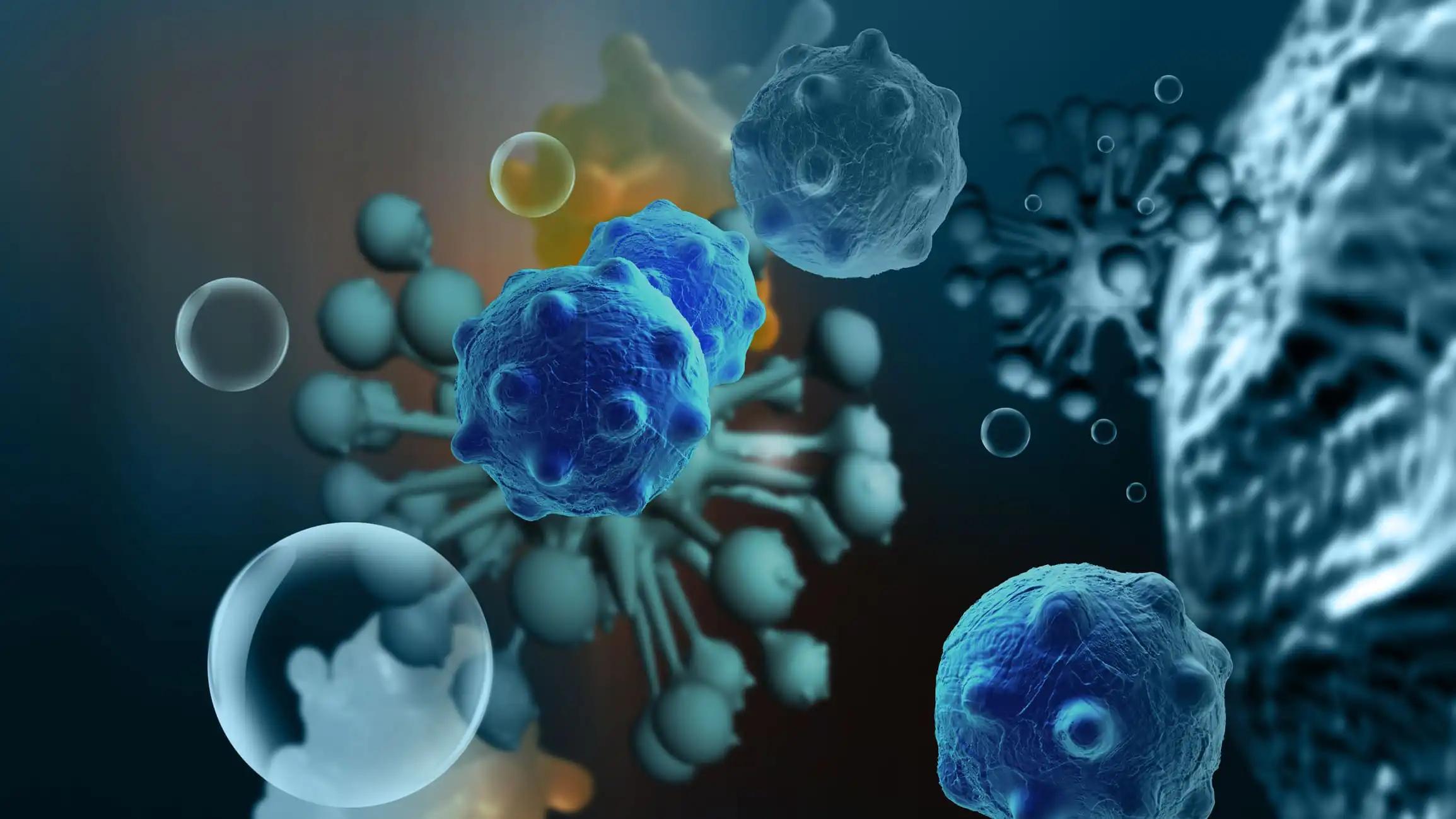KEY TAKEAWAYS
- The HD16 and HD18 phase I trials aimed to assess the comparative efficacy of PET and serum TARC levels for differential prognosis in pts with cHL.
- The primary endpoint was PFS.
- Serum TARC post 2 cycles of chemo can act as a prognostic indicator in pts with cHL, TARC-2 potentially assisted in pts subgroup differentiation.
Serum TARC levels after 2 cycles of chemotherapy (chemo) can serve as a prognostic indicator in classical Hodgkin lymphoma (cHL), distinguishing between different outcomes among positron emission tomography (PET)-2+ patients (pts). Thymus and Activation Regulated Chemokin (TARC)-2 positivity helps identify a subgroup of PET-2+ pts with a worse prognosis, while confirming that most PET-2 positive pts have outcomes similar to PET-2- pts.
Wouter Plattel and the team selected pts with cHL and serum samples were obtained from the HD16 and HD18 trials. The standard arm of HD16 involved treatment without interim PET (iPET) guidance, while the experimental arm of HD18 included iPET+ pts. HD16 focused on PET-guided radiotherapy de-escalation in early-stage favorable Hodgkin lymphoma (HL), whereas HD18 explored PET-guided BEACOPPesc (chemo de-escalation) in advanced-stage HL.
Serum TARC levels were measured using enzyme-linked immunosorbent assay ELISA at baseline (TARC-0) and after two treatment cycles (TARC-2) in all pts with available samples. TARC-positivity, defined as serum levels > 1000 pg/ml based on prior studies, was assessed.
Progression-free survival (PFS), from enrollment to disease progression, relapse, or death, was analyzed using Kaplan-Meier methods. HR was calculated via Cox regression, adjusted for age, sex, and trial when applicable. This study was conducted by the Consortium for Minimal Residual Disease in cHL.
The results showed that 278 pts were included in this study, of which 76 pts from the HD16 trial and 202 from the HD18 trial had measurable disease at baseline. Baseline characteristics of pts with available serum samples closely corresponded to those of the whole cohorts from both trials.
Initially, 67% of early favorable and 87% of advanced-stage pts were TARC+ at baseline. After 2 cycles of treatment, TARC-2 positivity significantly correlated with poorer prognosis. In the combined cohort from both trials, pts who were TARC-2+ had a markedly lower 5-year PFS rate compared to TARC-2- pts (75.1% vs. 89.7%, HR: 2.75 [95% CI: 1.19-6.37]).
After they combined the PET-2 and TARC-2 assessments revealed significant insights. Among PET-2+ pts, those who were TARC-2- showed a favorable 5-year PFS rate comparable to PET-2- pts (90.9% vs. 89.1%). Conversely, PET-2+ pts who were TARC-2+ had a substantially lower 5-year PFS rate (61.4%), highlighting TARC-2’s ability to differentiate outcomes within PET-2+ pts.
The study concluded that serum TARC levels were prognostic after 2 cycles of chemo, affirmed by the two trials- HD16 and HD18. TARC effectively distinguished between prognostic groups among PET-2+ pts and thus proved to be a potential prognostic biomarker for subgroup differentiation.
Both the tials were sponsored by University of Cologne.
Source: https://library.ehaweb.org/eha/2024/eha2024-congress/422331
Clinical Trials: https://clinicaltrials.gov/study/NCT00736320
https://clinicaltrials.gov/study/NCT00515554
Plattel W, Jablonski J, Kaul H, et al. (2024). “Serum TARC combined with FDG-PET imaging improves interim response evaluation in classic Hodgkin lymphoma: a retrospective analysis of German Hodgkin study group HD16 and HD18 trials.” Presented at EHA 2024. (abstr 422331; S227), https://library.ehaweb.org/eha/2024/eha2024-congress/422331



